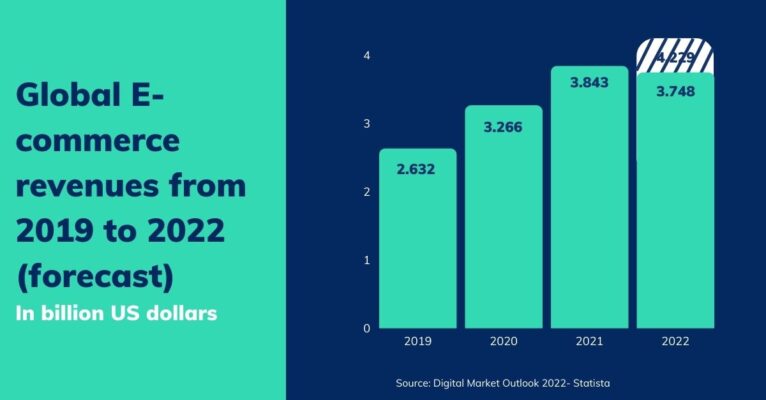Talking about Internet and pricing strategies, it is necessary to place the reasoning in the broader context of e-commerce. For the first time since the emergence of e-commerce, global e-commerce revenues look set to decline year-on-year in 2022, according to Statista’s forecast in the Digital Market Outlook. The forecast is for a decrease of 2.5 per cent compared to 2021, from USD 3,843 billion to USD 3,748 billion. The negative growth should be read in the context of the previous forecast for 2022, which assumed USD 481 billion more in revenue by the end of the year.

Internet and pricing, the service evolution
With the advent of the Internet, there has been a shift in sales paradigms on the part of companies, with the uprooting of space-time logic and the possibility of reaching their customers 24/7. To date, it is estimated that almost 80% of Italians have made at least one online purchase in the last 12 months.
Before delving into the subject of pricing and analysing which is the best strategy to adopt online, it is important to understand the network characteristics and the logic that governs it. One of the most revealing aspects is certainly that with the advent of online commerce, different ways of managing costs have emerged. By keeping fixed, albeit high, costs stable, marginal costs are often close to zero, so it is possible to implement economies of scale to increase margins. Also inherent to costs, it is possible to implement economies of scope and maximise penetration strategies. This type of cost structure allows a general reduction of costs by widening margins to adopt more advantageous pricing policies for the customer.
Internet and pricing, the characteristics of the network
Another intrinsic aspect of the network is the high transparency and ease of access to information for consumers who have the means to compare available offers. This makes it necessary for companies not only to constantly monitor their products but also those of their competitors, both to decide on the right price positioning and to implement effective price communication.
Furthermore, compared to classic physical channels, the Internet allows for a large number of interactions with the customer during the purchasing process, facilitating bundling policies that follow demand. These targeted communications and offers can be derived from the study of consumer behaviour, in fact, with simple tools, it is possible to monitor what actions individual consumers take, at what stage the purchase is interrupted and whether the reason for this interruption is actually price. Thanks to an accurate study of demand and through the use of A/B tests, different price points can be identified in this field to derive the elasticity of the products offered.
Internet and pricing, the study of the consumer and the competitive scenario
To be competitive, it is, therefore, necessary to have a very clear idea of the competitive scenario and the desired positioning, but even more important is to be able to adapt prices to the market evolution at a high speed to adopt dynamic pricing strategies to be able to position oneself in the best possible way and achieve the objectives of maximising turnover or volume. By studying consumption habits, it is possible to adopt customised pricing policies according to certain variables. This does not mean using unfair market practices, but it does mean being able to divide customers into homogeneous groups by propensity and purchasing capacity and offer them a price and product range in line with their specific needs.
Internet and pricing, business models
We have seen the main features of the Internet, but it is worth pointing out, that, unlike a traditional sale, there can be several viable business models, ranging from trade, and simple product sales, to models based on content or advertising. They have some common characteristics, such as the need to know one’s customers and their habits, but they require completely different pricing strategies, which we will elaborate on in one of the next articles.


